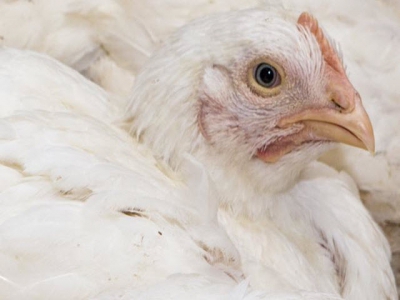How pie pans can help fight poultry diseases

A thought exercise can help veterinarians and farmers determine the actual causes of multifactorial diseases like necrotic enteritis.
Better understanding of the causes of challenging poultry diseases may lie in a pie pan.
As part of the U.S. Poultry & Egg Association’s Live Production, Welfare & Biosecurity Seminar, Dr. Joel Cline, corporate veterinarian for Wayne Farms LLC, explained the concept of the causal pie and how it can be used to comprehend the complex causes of troublesome diseases like necrotic enteritis. Cline spoke on September 18, 2018, at the event held in Nashville, Tennessee.
A confluence of factors
The concept is a thought exercise requiring one to consider what factors lead to an outcome, as if they were pieces of a pie filling a pan. No outcome can happen without a complete set of contributing factors.
While the idea may sound unusual, Cline explained that it is based on counteracting the human desire to see a correlation and therefore determine that the correlation is the causation of whatever instance. If an observer cannot find a verifiable cause and effect relationship, it will create one no matter how fanciful it may be. The human brain is hardwired to behave this way.
He applied this technique to necrotic enteritis. Veterinarians know Clostridium perfringens and coccidiosis contribute to the condition, but the rest of the contributing factors could come from anywhere in the house from the drinkers, to the litter condition, to the vaccination program, to the feeding program to the lighting program and environmental conditions. Cline listed at least 30 known contributing factors along with C. perfringens and coccidiosis.
Uses of the exercise
Cline said the causal pie technique is useful for:
- Explaining complicated, multifactorial diseases – like necrotic enteritis – and determining what is possibly contributing to it in a flock.
- Demonstrating a process focused approach to disease prevention by isolating possible contributing factors and eliminating them from the farm and the supply chain.
- Staying focused on what’s actually causing the disease instead of chasing down every potential lead fruitlessly.
Có thể bạn quan tâm
 Impact of dust, formaldehyde and delayed feeding after hatch
Impact of dust, formaldehyde and delayed feeding after hatch During the hatch window the early birds are exposed up to 36 hours to the hatchers environment. Depending on circumstances dust, formaldehyde
 New rapid method to develop IBV vaccines for poultry
New rapid method to develop IBV vaccines for poultry Major challenge to controlling IBV is achieving protection against numerous types of the virus circulating in commercial poultry.
 Encouraging Hens to Lay in Nests
Encouraging Hens to Lay in Nests The occurrence of non-nest eggs (floor and slat eggs) will lead to increased labour requirements, reduced hatching egg quality and a potential reduction